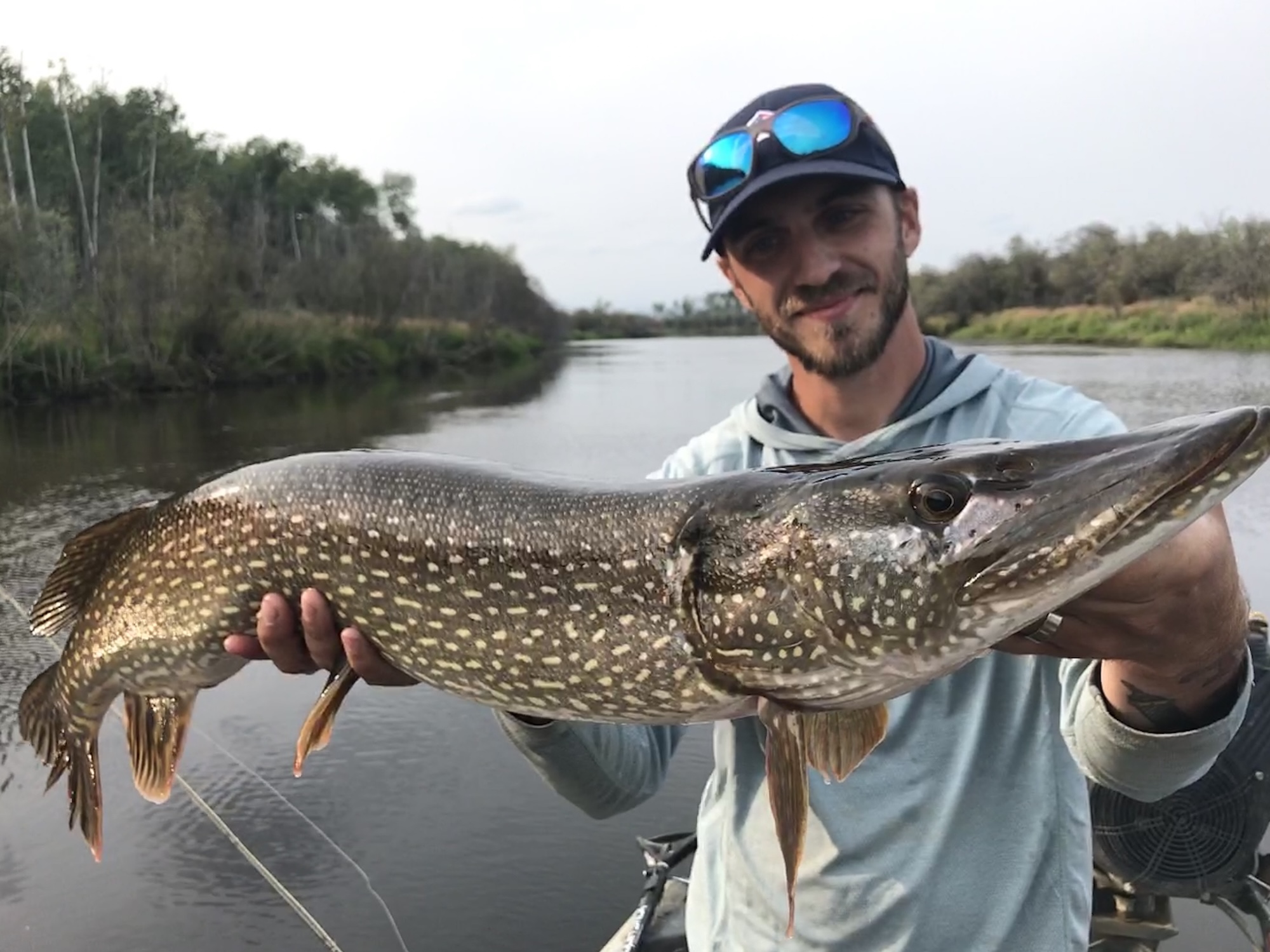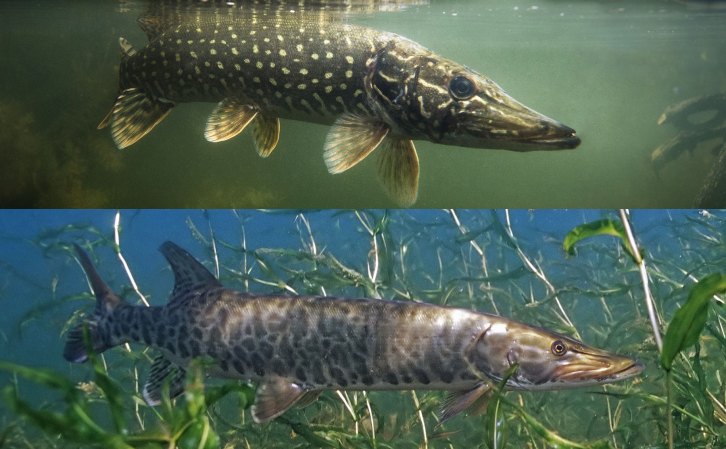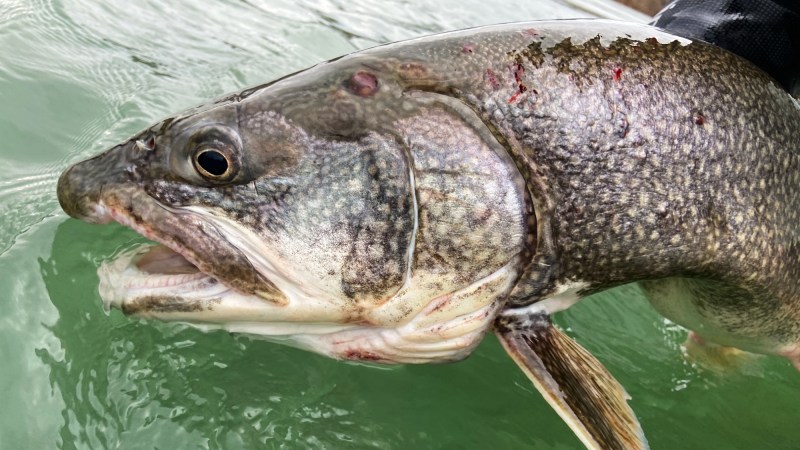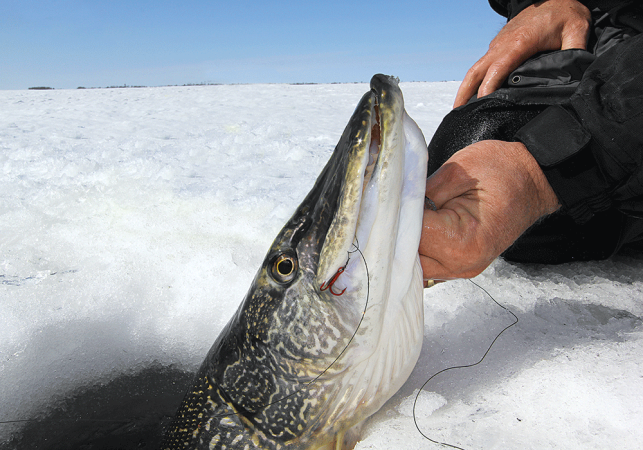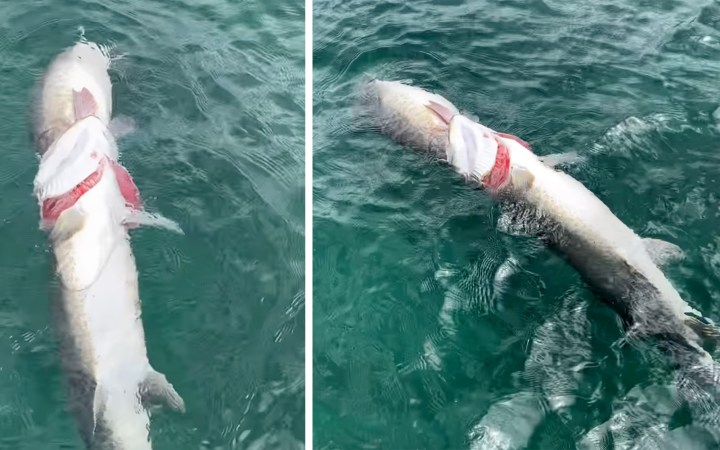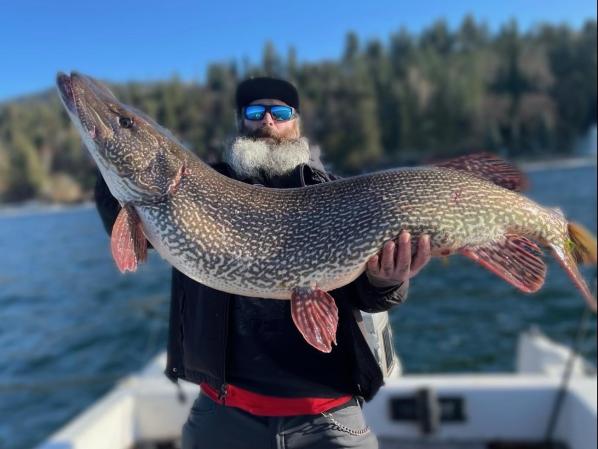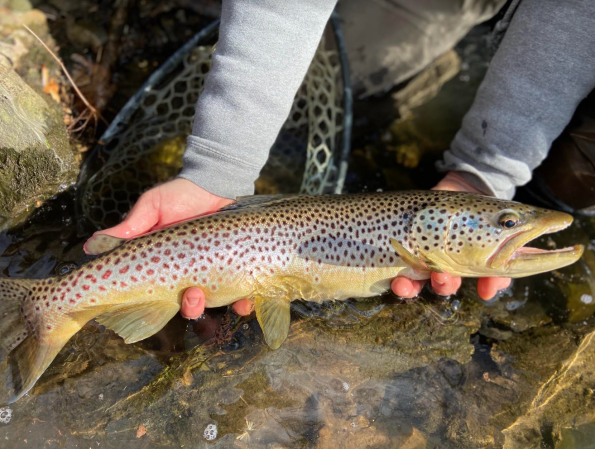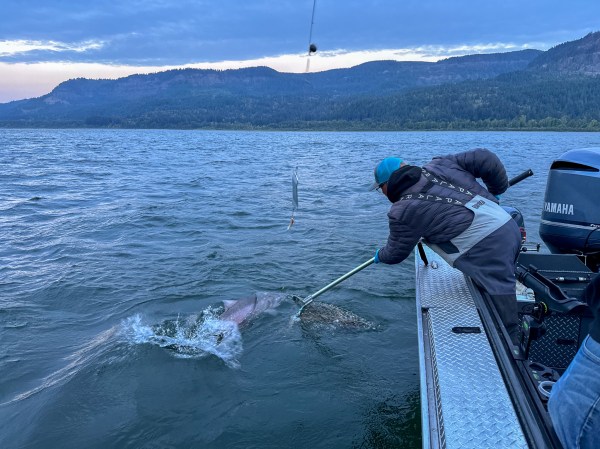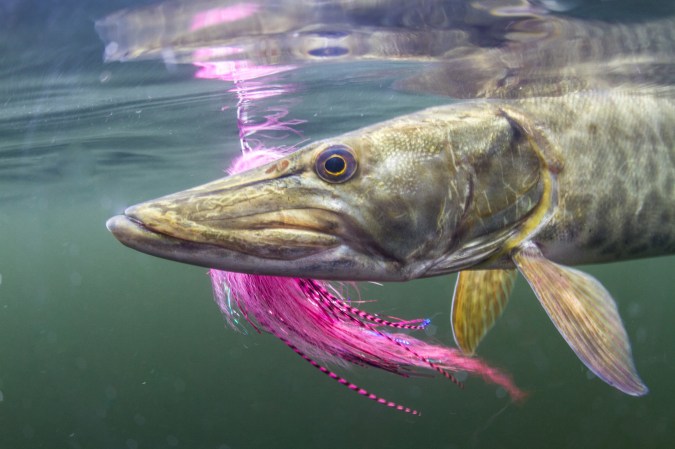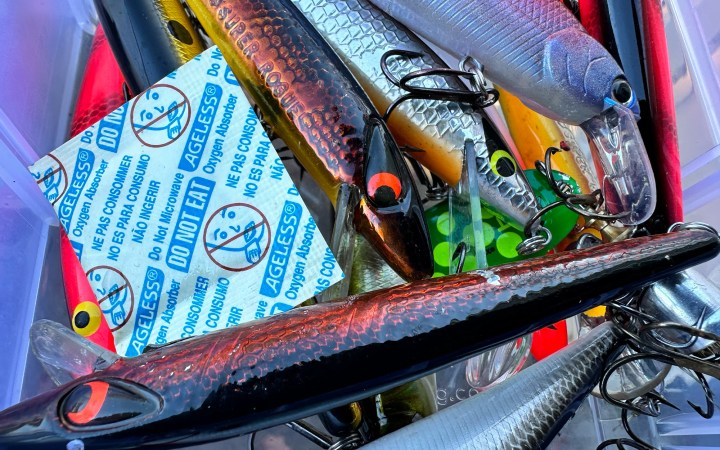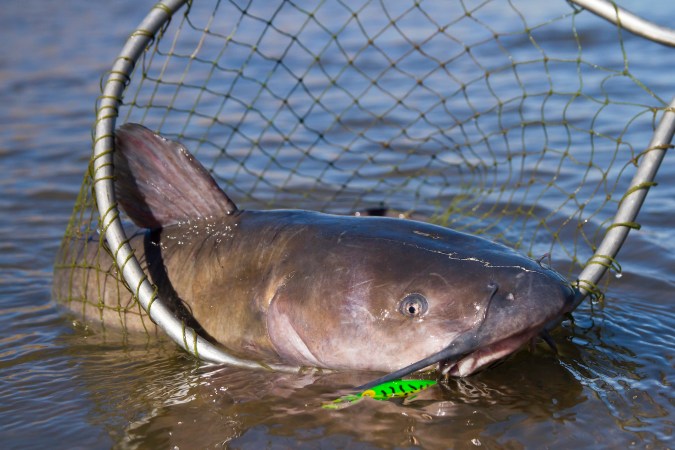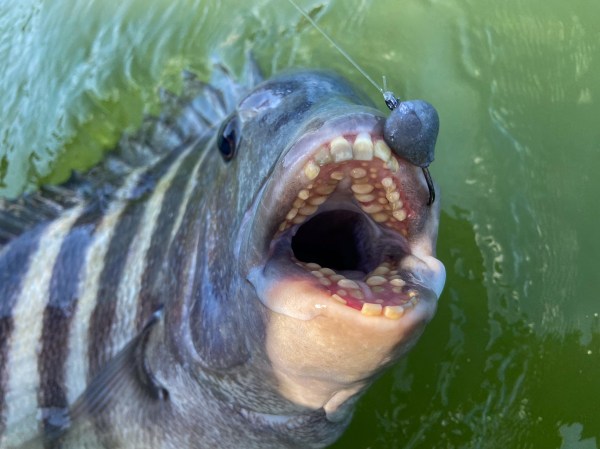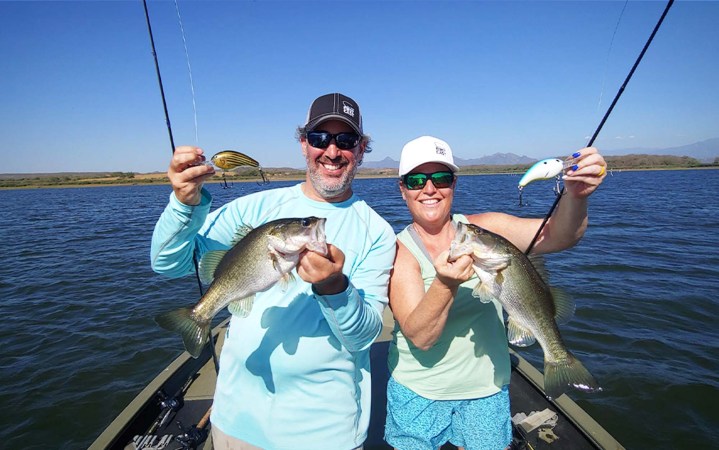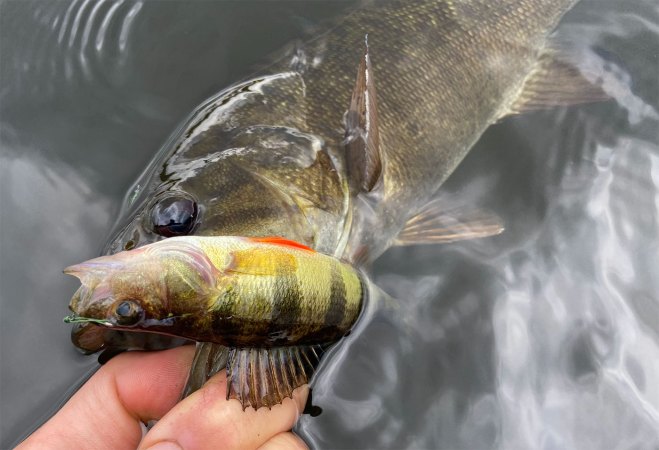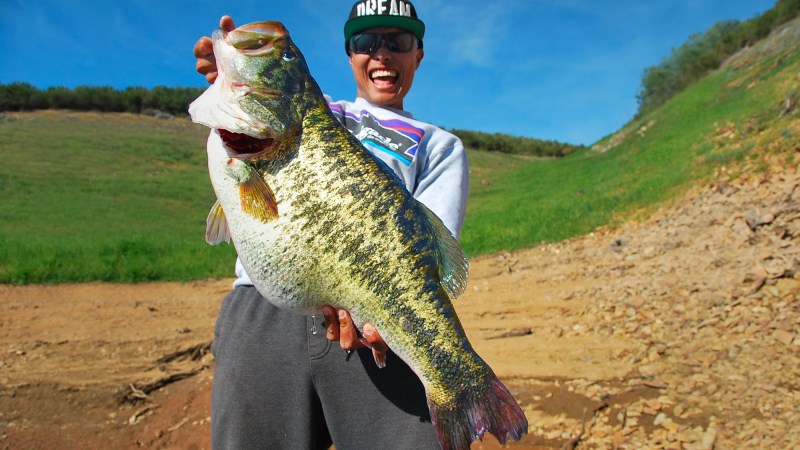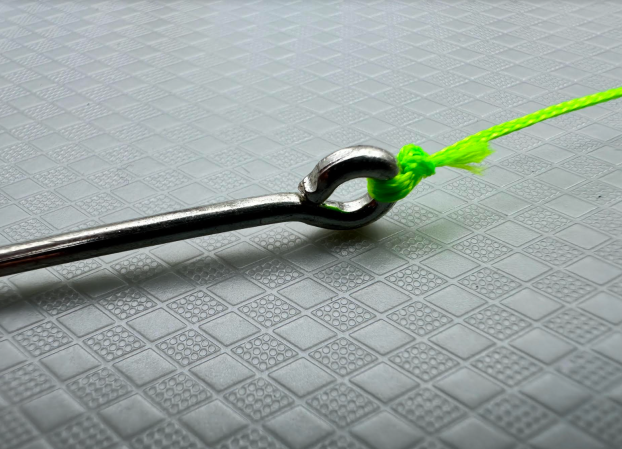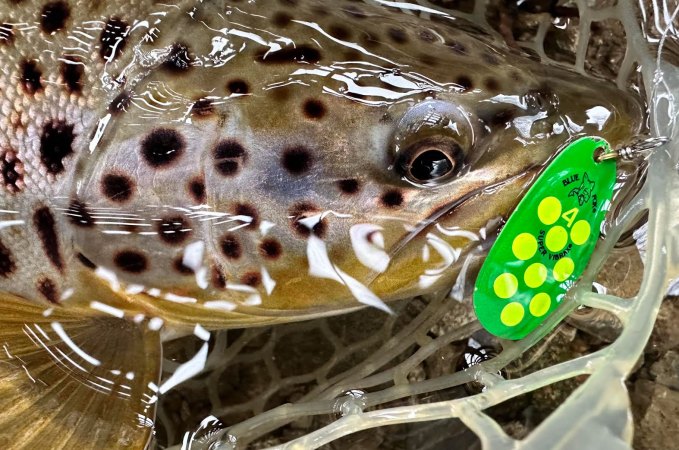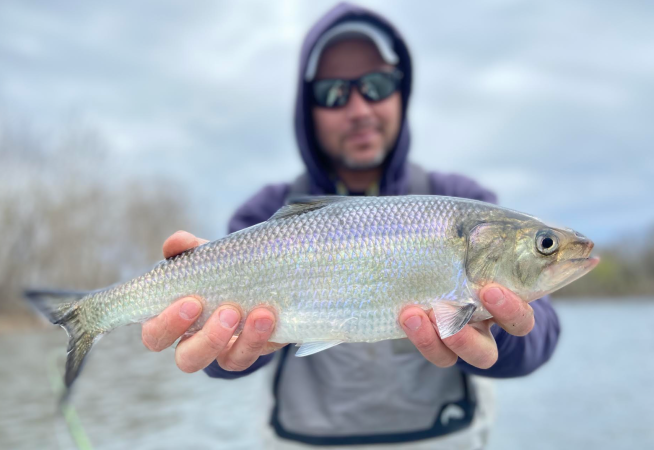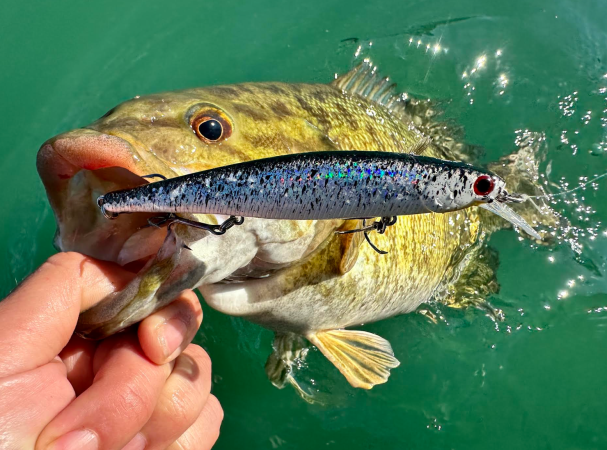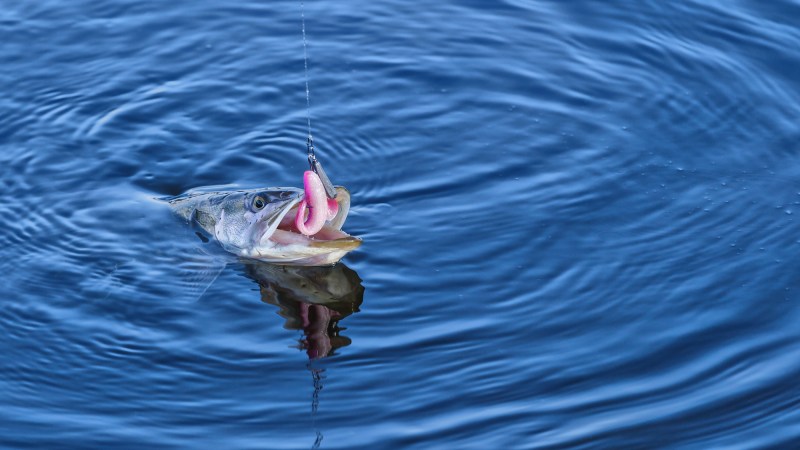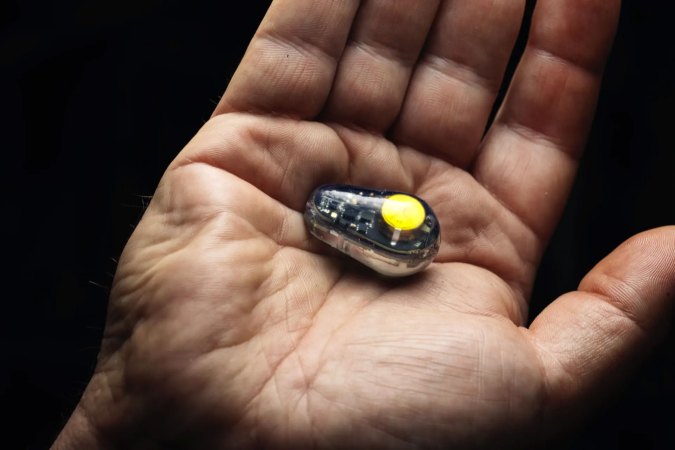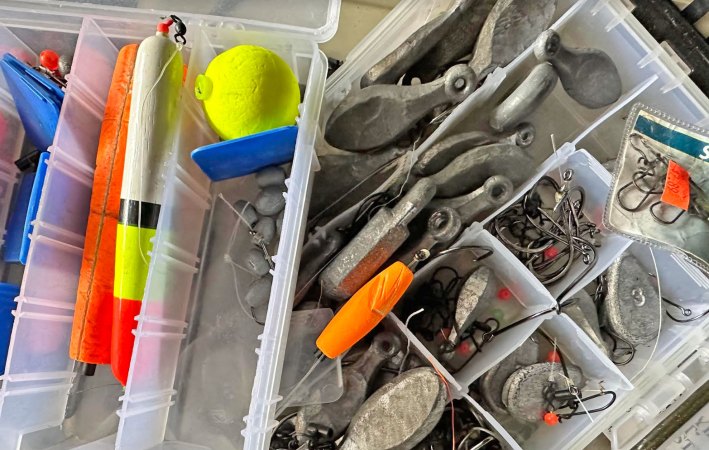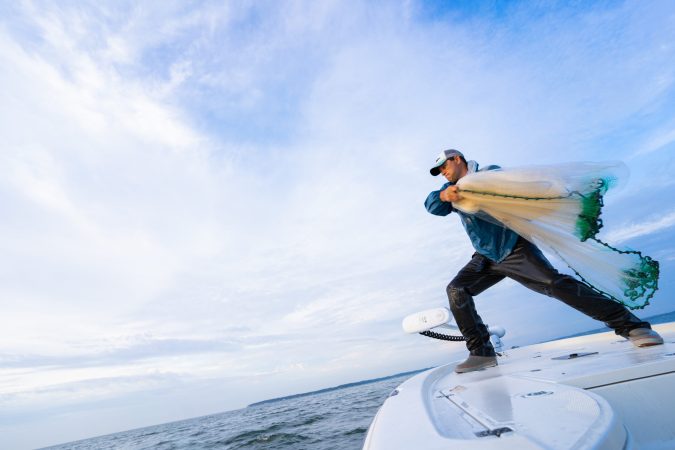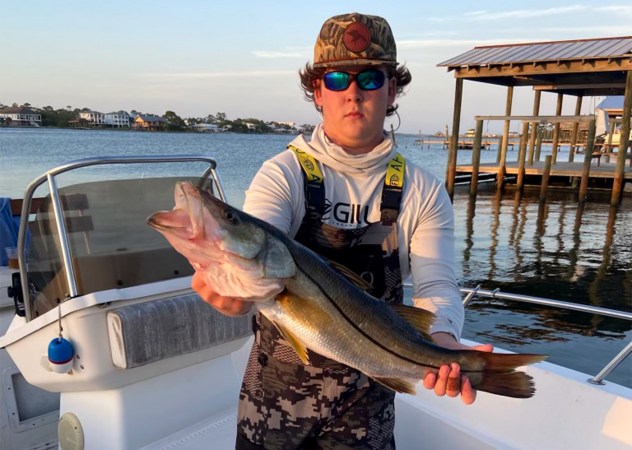We may earn revenue from the products available on this page and participate in affiliate programs. Learn More ›
Northern pike, chain pickerel, and muskies are all members of the same family. And if we were comparing them to the porridge in “Goldilocks and the Three Bears,” pike fishing would be “just right.” More Americans have access to pickerel, but a 25-incher would be a giant. Muskies, conversely, aren’t called the “fish of 10,000 casts” for nothing. They require specialty tackle and a lot of time and dedication. Then you have the northern pike, which hits a toothy-fish sweet spot.
Pike fishing is available to a lot of anglers. Northern pike can grow very large, but small to medium-sized fish are abundant and bigger on average than even a “trophy” chain pickerel. By and large, they’re far more voracious than muskies and willing to strike a wide variety of baits and lures. This makes pike perfect for anglers of any skill level and budget. So, if you’re looking to get after these toothy predators this season, these tips and tricks will get you on the fast track to success.
Quick Pike Fishing Tips
- Pike have incredibly sharp teeth. Regardless of the method you use to target them, a leader made of steel or heavy monofilament is necessary to avoid get bitten off.
- Though you can find pike in deep, open water, they spend most of their time hunting in shallower water loaded with weeds.
- One of the best times to target pike is in early spring as soon as any ice on the lake or river melts away.
- While small pike are often ravenous, fish that reach lengths greater than 40 inches are much smarter, warier, and harder to fool.
- Don’t be afraid to use lures in bright, loud colors, as these can trigger an aggressive response in pike even when they’re not hungry.
- Pike can swim at speeds up to 10 miles per hour, making them one of the fastest fish in freshwater.
- Lures such as spinners that produce high vibration can be felt by a pike’s lateral line from a great distance.
- Given that they’re a cold-water fish, pike don’t slow down in winter as much as other species, instead continuing to feed and hunt.
- While live baits like shiners and suckers work well for pike, they’ll also eat dead and cut baits — even hot dogs.
- Pike are most apt to hit a topwater lure during the low-light periods around dawn and dusk.
Gear Tips for Pike
Don’t Skip the Bite Leader
Northern pike have mouths full of razor-sharp teeth. In the blink of an eye, they’ll sever everything from light monofilament to heavy braided fishing line with surgical precision. This is why pike are a bit of scourge for anglers targeting species like bass and walleye that live in the same waters — one snap of those jaws and an expensive lure is gone. If you’re specifically pike fishing, however, bite-offs can be avoided by incorporating a protective leader into your rig. These can be made from steel, though some anglers prefer to use a short length of extra-heavy fluorocarbon testing 80 pounds or more.
Regardless of whether you’re fishing with lures, flies, or live bait, you don’t need a very long bite leader. Eight to 10 inches is usually sufficient, with the objective being to make it long enough that a pike won’t get your main line in its mouth, but short enough that a stiff leader won’t hinder the natural action of live baits or lures. Though you can buy materials to make your own custom leaders, pre-made steel leaders are readily available in tackle shops.
Hook Sharpness Is Everything for Pike Fishing
Compared to popular gamefish like bass, walleyes, crappies, and trout, northern pike have much tougher mouths. Their elongated jaws are made of pure bone and teeth, offering fewer soft areas to firmly plant a hook than you’ll find in maws of other fish. It’s essential that your hooks are very sharp and honed to a needle-like point, especially if you’re targeting big pike. This, of course, is a critical step many anglers skip.
By and large, fishermen simply don’t pay enough attention to hook sharpness regardless of the species they’re targeting. The good news is, hook files are inexpensive and easy to use. Beyond checking the sharpness of your bait or lure hooks before a pike fishing trip, you should re-check them after a fish is landed or you get snagged in wood, rock, or other hard structure. It’s very common to have a hook pop out of a pike’s mouth mid-fight because it was too dull to penetrate beyond the first thin layer of interior skin.
Match Your Outfit to Your Target
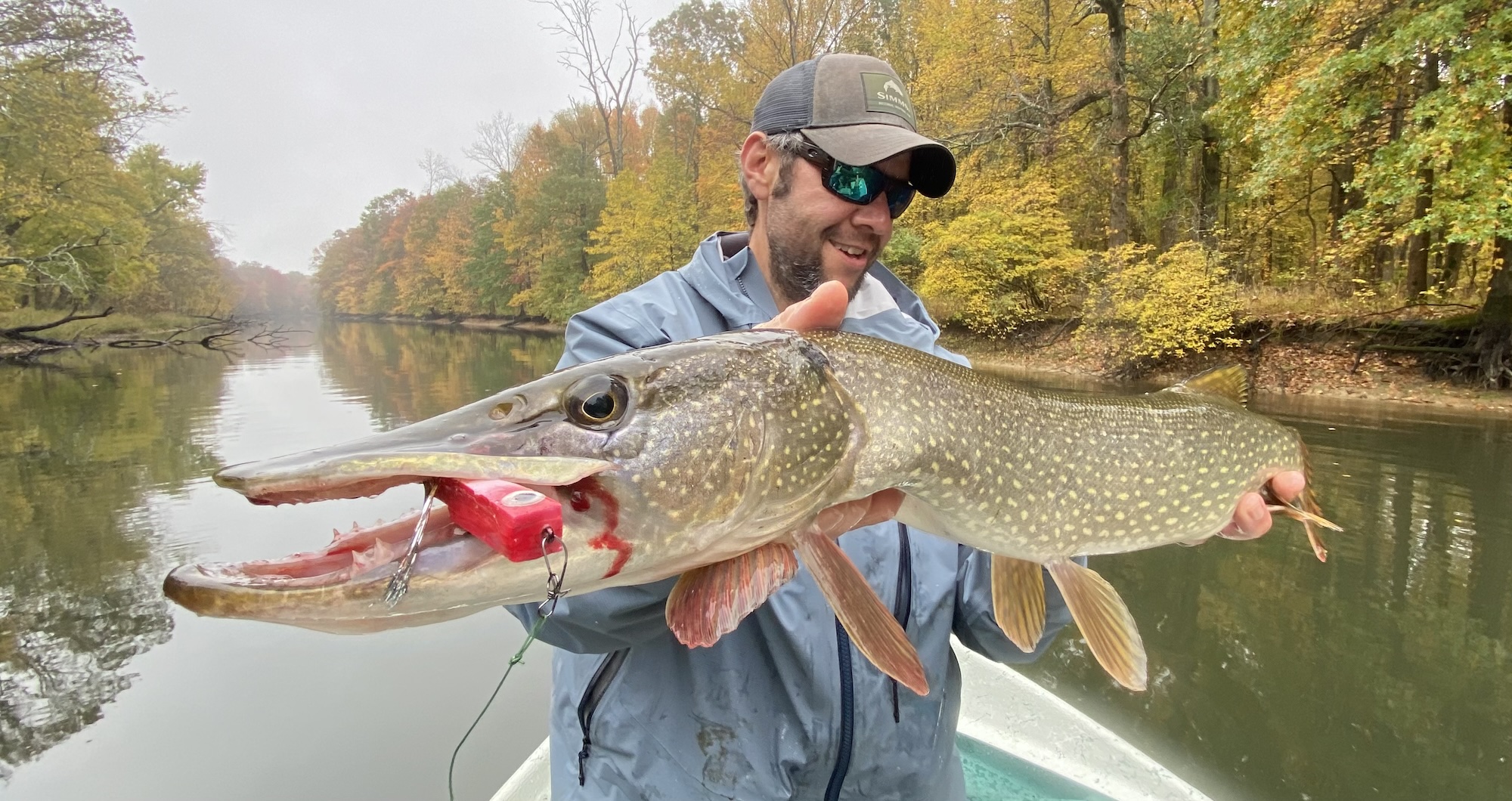
Everyone wants to catch massive pike. To qualify as a true trophy, most anglers would agree the fish has to stretch beyond the 40-inch mark. The rub is that while pike are widely available across the northern U.S. and southern Canada, waters with an abundance of true goliaths are relatively few. More commonly, especially in the U.S., you’ll have a lot of smaller pike and occasionally luck into a behemoth. Conversely, if you were to pony up the money to get to, say, northern Saskatchewan, it’s possible to land a dozen 40-plus-inchers in a single day. The point is, you’ll have more fun pike fishing if you match your gear to the average fish size in your waters instead of beefing up just in case that occasional monster shows up.
Read Next: How to Correctly Net Trophy Fish
A great middle-of-the-road outfit would be a medium-heavy baitcasting rod in the 7- to 7-foot, 6-inch length. Any low-profile baitcasting reel will work, just make sure it’s spooled with 20- to 30-pound braided line. An outfit like this won’t be too heavy to throw lighter lures, but it’ll be stiff enough to deliver larger baits if you want to trying coaxing only the biggest plays in the lake.
Most importantly, even if a 50-plus-inch pike happened to take a shot, you’ll land it on this outfit. Despite what some anglers may tell you, you don’t need a broomstick and winch to best a huge pike if you play it deftly and make sure your drag is set properly. Conversely, a medium-heavy outfit will let you enjoy the fight of smaller fish.
Pike Fishing Lure Tips
Put Out the Vibe
There are dozens of lure styles that fool pike, but when in doubt, tie on a lure with a spinning blade. That could be a larger in-line style spinner or a spinnerbait, but the bottom line is that pike respond to the flash and vibration emitted by spinners blades practically year-round. The only time these lures lose a bit of their potency is when the water is very cold, not so much because they pike won’t hit them, but because they’ll be less willing to chase them.
Read Next: The Best Spinner Baits
During the rest of the season, however, a spinner or spinnerbait can attract pike from a significant distance. Likewise, a pike holding still in an ambush position often gets instantly trigged if one of these lures comes whizzing by its face. The beauty of these lures is that they don’t require a lot of skill or practice to use effectively — simply cast out and reel in steadily.
Keep Your Speed Up
Like their larger cousin the muskie, pike will often track a lure before committing. Depending on how fired up the fish is, that following distance can vary. A fish that’s curious might be slowly following a few feet behind the bait, while another might be trailing inches behind it snapping its jaws. Regardless, a big mistake anglers make when they have a pike following their lure is pausing or slowing down the retrieve significantly.
That’s not to suggest these tactics never turn a follower into an eater, but in general, pausing or slowing makes a lure look unnatural to the fish. Instinctually we want to stop and give a following fish a chance to catch up to the lure, but in the wild, live prey is always going to try to get away from a pike. Stopping or slowing only increases the likelihood of getting eaten, so, to a pike, a fish it’s pursuing that suddenly stops or gives it a chance to catch up often makes the pike less likely to finally attack — it tips it off that something’s off. If anything, increasing the rate of the retrieve when there’s a pike in tow is the better move, as it simulates a natural baitfish trying extra hard to get away.
Never Take Your Eyes Off a Topwater
In spring and summer, nothing is more thrilling than watching a pike smack a topwater lure. It’s eruptive and violent, but it also takes some commitment. Though there are times when a topwater lure like a Whopper Plopper or buzzbait can scores dozens of bite in a day, it’s not uncommon to have to forgo numbers of bites on subsurface lures in order to get the glory of that surface smash. And if you do commit, never take your eye off the topwater.
Species like bass and trout eat off the surface in a multitude of ways. Their hits can be violent and unexpected, too, but they can often be subtle and delicate. They also frequently give you a warning in the form of a boil or ripple behind the bait before committing. Pike, on the other hand, tend to explode of nowhere. We often expect a topwater strike to come from behind or directly under the lure, but pike love to attack from the side—what’s known as “T-boning”—just like barracudas and wahoo in saltwater. Given that their mouths are bony and thin in profile compared to other fish, it’s critical that you nail a solid hookset when your topwater gets taken down. But when bites are infrequent, it’s easy to lose focus. If you’re talking to a buddy or thinking about dinner while monotonously working that topwater, it’s possible to miss a bite because it happens so quickly.
Tactical Pike Fishing Tips

Fish the Weeds
Pike love weeds. It doesn’t matter if they’re green summer weeds, decaying brown fall weeds, or remnant dead weeds in winter. If there’s vegetation of any kind in the area, that’s a prime location to hunt for pike.
Vast expanses of weeds are like the grocery store for pike. Small and juvenile fish of all varieties live among them. The pike has an advantage because its color and pattern blends well with aquatic vegetation, allowing it to easily ambush prey. Weeds, of course, can easily foul your lures, especially if they’re loaded with treble hooks, so the key is fishing over and around the weeds without running directly through the salad.
Most pike lures run shallow so they can be worked just over the weed tops, but even lures like spinners and spoons can cruise over the vegetation as long as you don’t let them sink too deep before engaging the reel and starting your retrieve. Pike have no trouble exploding out of the vegetation to attack. Likewise, any areas where a deeper, open drop-off butts up against a shallow weed bed is prime, as pike will patrol the edges waiting for food to come out of the weeds and become exposed.
Go Pike Fishing During Ice-Out
One of the best times to catch big pike is right after ice-out, meaning as soon as winter’s grip loosens and ice comes off the lake. During this early spring period, pike will move into shallow coves and bays looking for everything from baitfish to ducklings kicking across the surface. While boating anglers certainly cash in on this spring ritual, this also makes large pike more accessible to anglers on foot.
When hitting these shallow areas in spring, pay close attention to the wind direction when choosing a bay or cove. Though pike will frequent these areas under a wide range of conditions, wind blowing into the bay or cove will push baitfish and other forage species deeper into the cove against the inside bank. Wind ripple on the surface also makes pike feel less exposed in the shallows, especially when fresh aquatic vegetation hasn’t grown in yet. Though it may seem counterintuitive, a breezy day with some surface chop can produce massive topwater hits right after ice-out.
Try Dead Baits in Winter
Even though pike are some of the most aggressive fish in freshwater, they don’t need to hunt and violently attack to feed. Once the water cools in late fall, they’re just as keen to eat like a catfish, slurping dead baits that require no effort to chase right off the bottom. Though it runs counter to pike tactics at other times of year, simply waiting for a bite can pay huge dividends when it’s cold.
Read Next: The Best Spinning Rods of 2024, Tested and Reviewed
Fresh-dead suckers, shad, bluegills or perch (where legal to harvest for bait) are choice offerings. They can be fished whole or cut into chunks to release more scent. One important thing to keep in mind is that since pike don’t grab dead baits with the same aggression as lures, it’s important to give them fish time to eat before setting the hook. A pike will often hold a dead bait in its mouth and slowly swim away, taking its time working it back to its throat.
Final Thoughts on Pike Fishing
If you fish rivers and lakes in the Upper Midwest, Northeast, Canada, or Alaska, you should have plenty of opportunities for pike fishing. Pike are ambush predators that hunt the shallows, underwater structure, and cover, like weeds, in cool water habitat. Remember to always sharpen your hooks, match your tackle to the average size of the pike where you’re fishing, and to pay attention to the habitat and time of year to get the most out of pike fishing.

